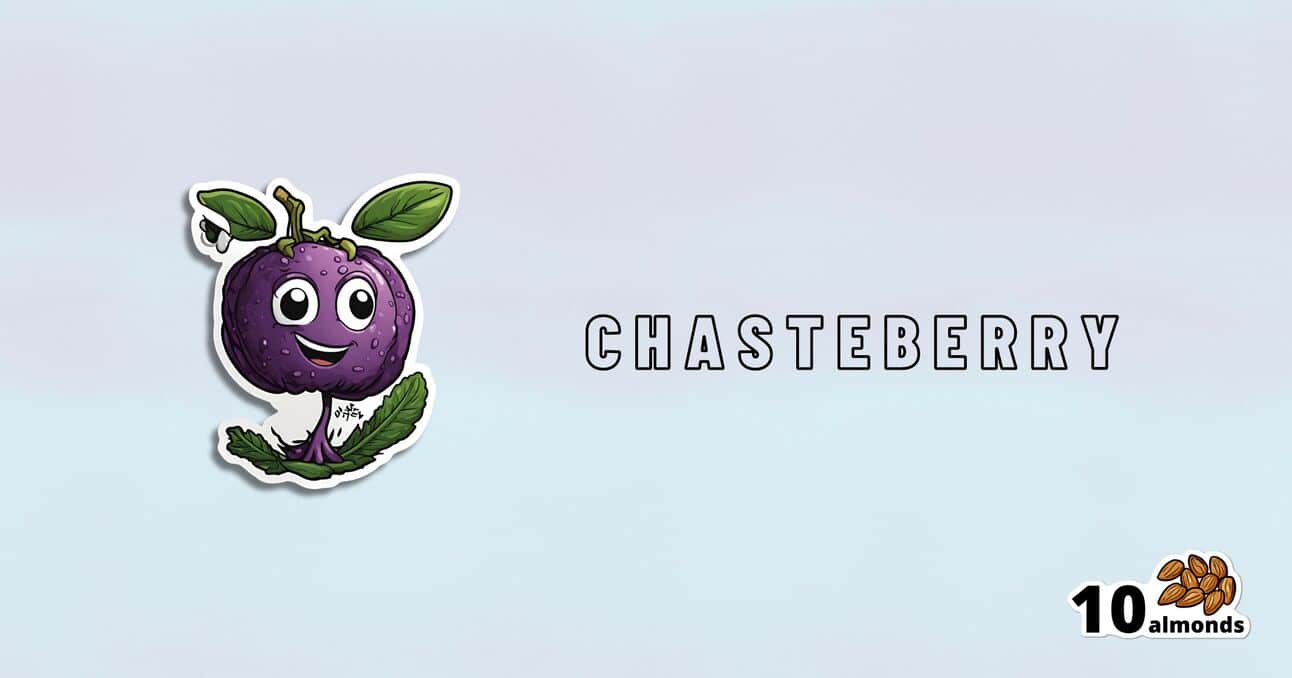The Unchaste Berry
Chasteberry: Myth vs Science. It lowers prolactin, not libido or milk production, yet effectively eases PMS and menopause symptoms. Always consult a doctor before use.

A Chasteberry, By Any Other Name…
Vitex agnus castus, literally “chaste lamb vine”, hence its modern common English name “chasteberry”, gets its name from its traditional use as an anaphrodisiac for monks (indeed, it’s also called “monk’s pepper”), which traditional use is not in the slightest backed up by modern science.
Nor is its second most popular traditional use (the increase in production of milk) well-supported by science either:
❝Its traditional use as a galactagogue (i.e., a substance that enhances breast milk production) is not well supported in the literature and should be discouraged. There are no clinical data to support the use of chasteberry for reducing sexual desire, which has been a traditional application❞
Source: American Family Physician | Chasteberry
Both of those supposed effects of the chasteberry go against the fact that it has a prolactin-lowering effect:
❝It appears that [chasteberry] may represent a potentially useful and safe phytotherapic option for the management of selected patients with mild hyperprolactinaemia who wish to be treated with phytotherapy.❞
Source: Vitex agnus castus effects on hyperprolactinaemia
Prolactin, by the way, is the hormone that (as the name suggests) stimulates milk production, and also reduces sexual desire (and motivation in general)
- In most women, it spikes during breastfeeding
- In most men, it spikes after orgasm
- In both, it can promote anhedonic depression, as it antagonizes dopamine
In other words, the actual pharmacological effect of chasteberry, when it comes to prolactin, is the opposite of what we would expect from its traditional use.
Ok, so it’s an unchaste berry after all…. Does it have any other claims to examine?
Yes! It genuinely does help relieve PMS, for those who have it, and reduce menopause symptoms, for those who have those, for example:
❝Dry extract of agnus castus fruit is an effective and well tolerated treatment for the relief of symptoms of the premenstrual syndrome.❞
❝That [Vitex agnus castus] trial indicated strong symptomatic relief of common menopausal symptoms❞
Source: Vitex agnus castus essential oil and menopausal balance: a research update
Is it safe?
Generally speaking, yes. It has been described as “well-tolerated” in the studies we mentioned above, which means it has a good safety profile.
However, it may interfere with some antipsychotic medications, certain kinds of hormone replacement therapy, or hormonal birth control.
As ever, speak with your doctor/pharmacist if unsure!
Where can I get some?
We don’t sell it, but here for your convenience is an example product on Amazon 😎
Enjoy!
Share This Post
Learn To Grow
Sign up for weekly gardening tips, product reviews and discounts.




